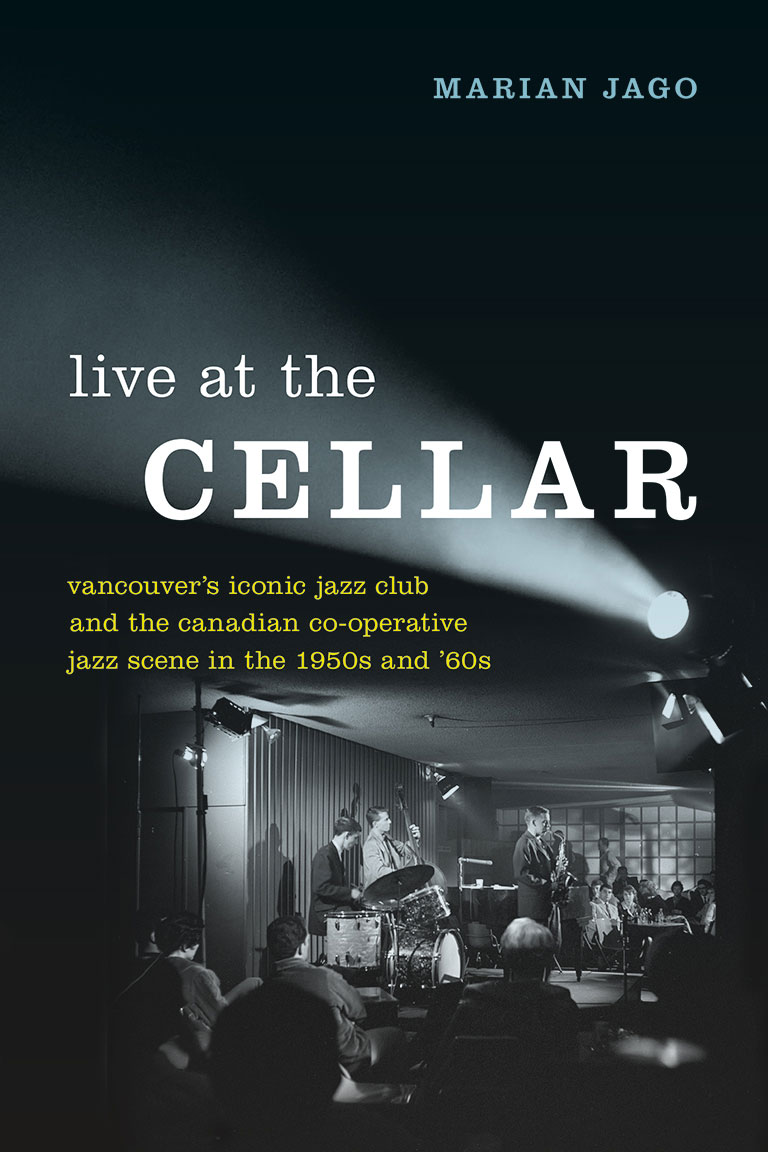Live at the Cellar

Live at the Cellar: Vancouver’s Iconic Jazz Club and the Canadian Co-operative Jazz Scene in the 1950s and ’60s
by Marian Jago
UBC Press, 363 pages, $29.95
In 1961, during a stint at the Cellar club in Vancouver, legendary jazz bassist Charles Mingus got into an altercation with a member of the BC Lions football team. According to witnesses, he threatened the player, who was in the audience, with a toilet plunger from the club’s bathroom.
While author Marian Jago recounts the Mingus story from several perspectives, it’s one of only a couple of examples of lurid lore from Live at the Cellar, her comprehensive but somewhat dry history of Vancouver’s first co-operatively run jazz club. Jago is an expert — she’s a lecturer in popular music and jazz studies at the University of Edinburgh — and it’s clear that Live at the Cellar was written by a scholar, not a journalist, as it relies heavily on dates and details at the expense of colour. The book’s copious footnotes often contain stories one wishes would have been woven into the narrative.
The book never quite conveys the magical way a unique music scene holds sway over its participants — audiences and players alike — to make them feel like members of an exclusive club whose clubhouse has its own personality. Nevertheless, the way Jago sets the stage to explain how and why a musician-run, co-operative jazz venue emerged at this specific time in Vancouver, as in several other places, provides a fascinating window into Canadian history.
In the age of Facebook and the globalization of media, it’s easy to forget that in the 1950s Canadian cities existed as silos, regional pockets with very little knowledge of what was going on in the rest of the country — or, indeed, the world. National and international news was one thing. But as far as pop culture was concerned, if you wanted to know what hepcats were into in San Francisco or New York, it took a concerted effort.
Vancouver was a bit of a backwater, and the people who were dedicated to creating a scene — a concept that’s central to Jago’s premise — were in a way cultural gatekeepers. The Cellar was their playground, but it was also their school, where they were both students and teachers.
Live at the Cellar also shows how the era’s restrictive liquor laws shaped the success of various venues. Part of the Cellar’s appeal was that it didn’t have a licence, so all were welcome. It operated as a “bottle club,” where patrons could easily and surreptitiously sneak in booze — something that appealed to an audience that expected a lounge experience. (Unaccompanied women were not welcome in Vancouver’s cocktail lounges in the late 1950s.)
Jago points out that, despite operating with the lofty notion of a member-run club, the men — and they were all men — who formed the co-op largely escaped the domestic work that was involved in running a business. Tasks such as cleaning, working the door, and preparing food were performed by women, while the male musicians largely enjoyed the fruits of their labour and jamming late into the night.
The book offers nuggets of sociological gold. Jago touches on the hurdles faced by black and female musicians as well as the importance of the CBC in promoting the fledgling jazz scene. However, the radio network also shunned many of the Cellar’s members, who lacked the technique and chart-reading ability required to play in the broadcaster’s orchestras.
Unfortunately, for a work revolving around a musical genre that revels in improvisation, this book lacks the kind of narrative filigrees that might intrigue devotees of the form who are already familiar with the main players. Though Live at the Cellar has the chops when it comes to research and historical relevance, it never quite finds its groove as a tale well told.
We hope you’ll help us continue to share fascinating stories about Canada’s past by making a donation to Canada’s History Society today.
We highlight our nation’s diverse past by telling stories that illuminate the people, places, and events that unite us as Canadians, and by making those stories accessible to everyone through our free online content.
We are a registered charity that depends on contributions from readers like you to share inspiring and informative stories with students and citizens of all ages — award-winning stories written by Canada’s top historians, authors, journalists, and history enthusiasts.
Any amount helps, or better yet, start a monthly donation today. Your support makes all the difference. Thank you!
Themes associated with this article
Advertisement




